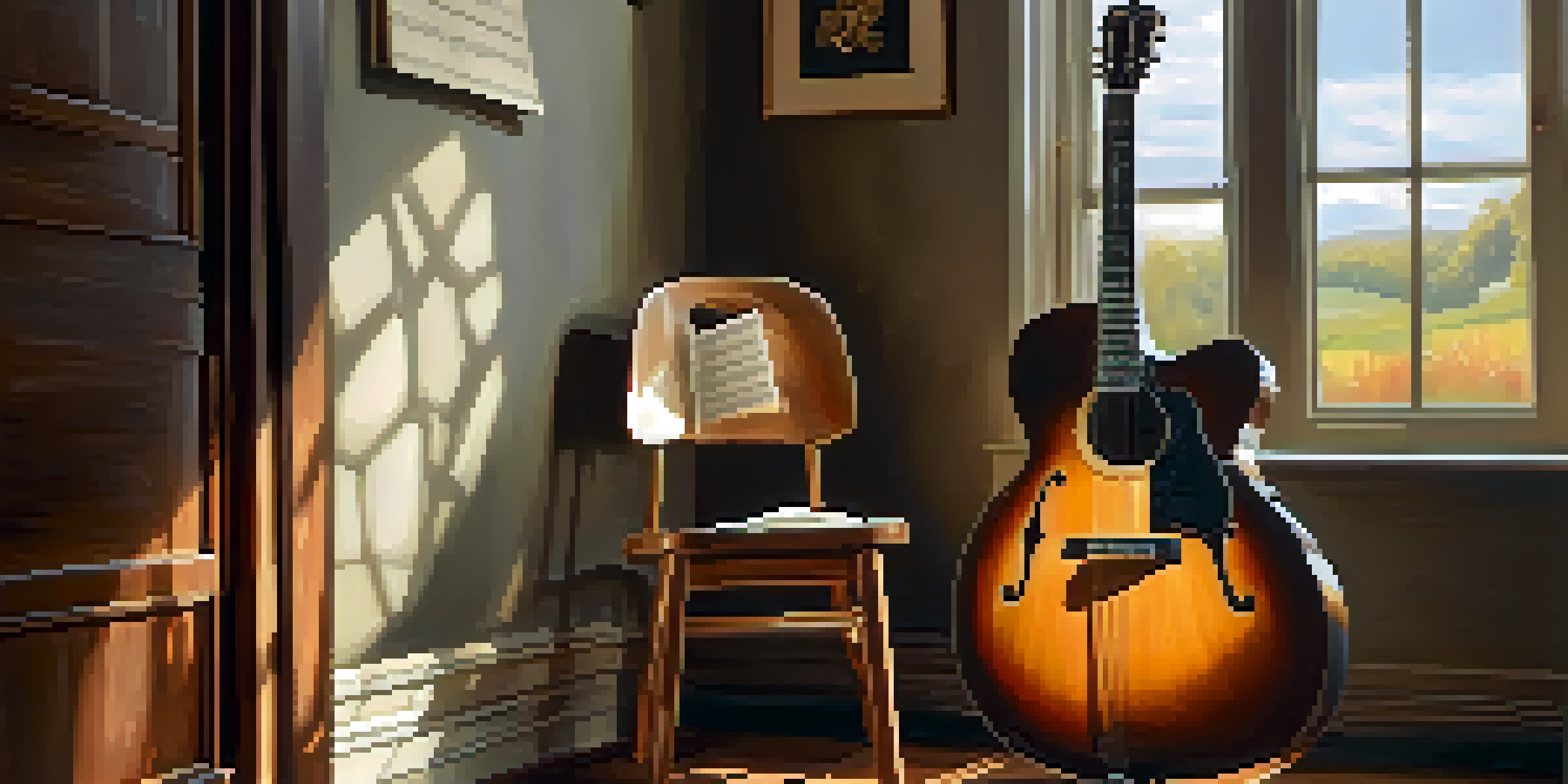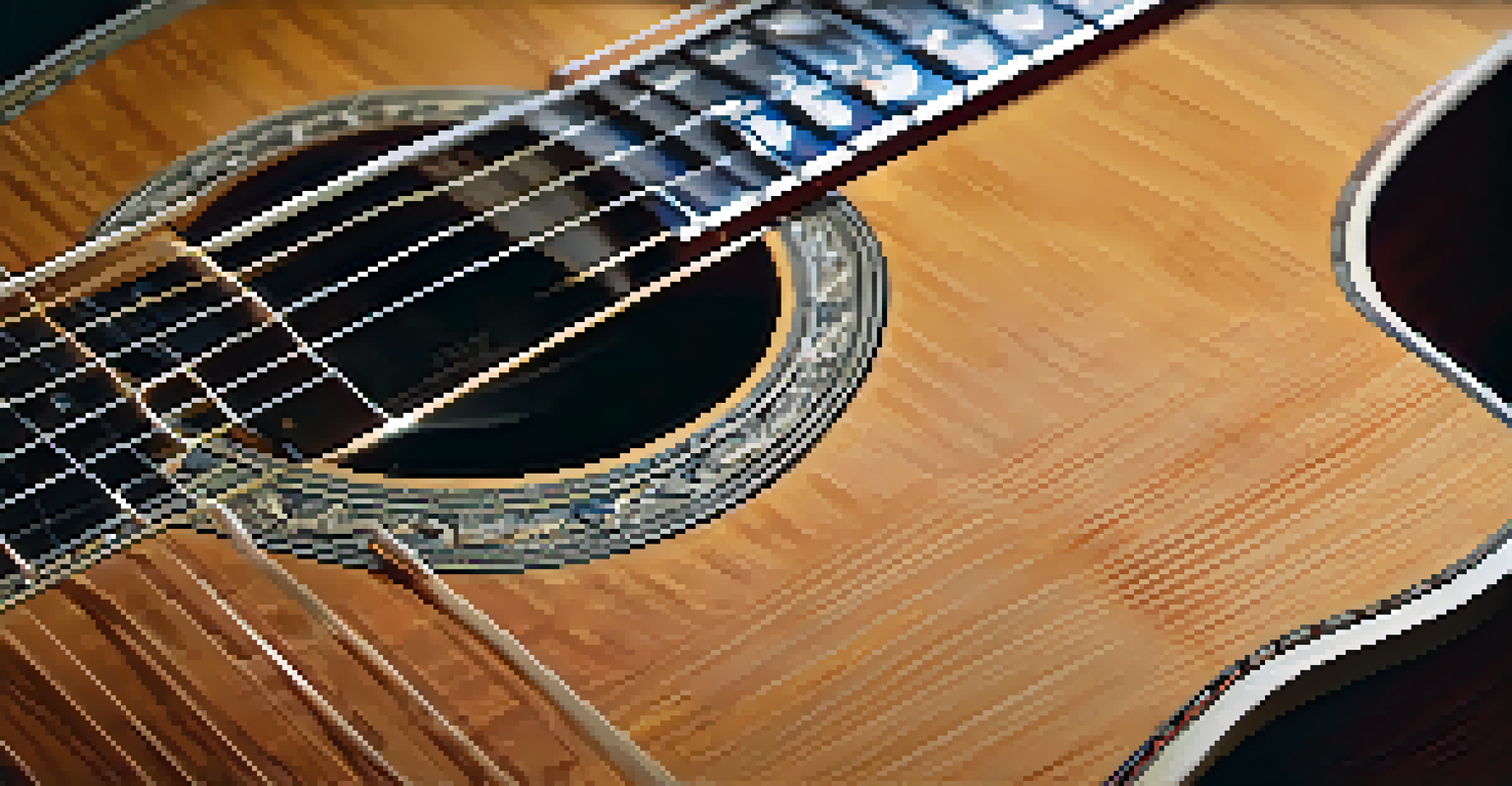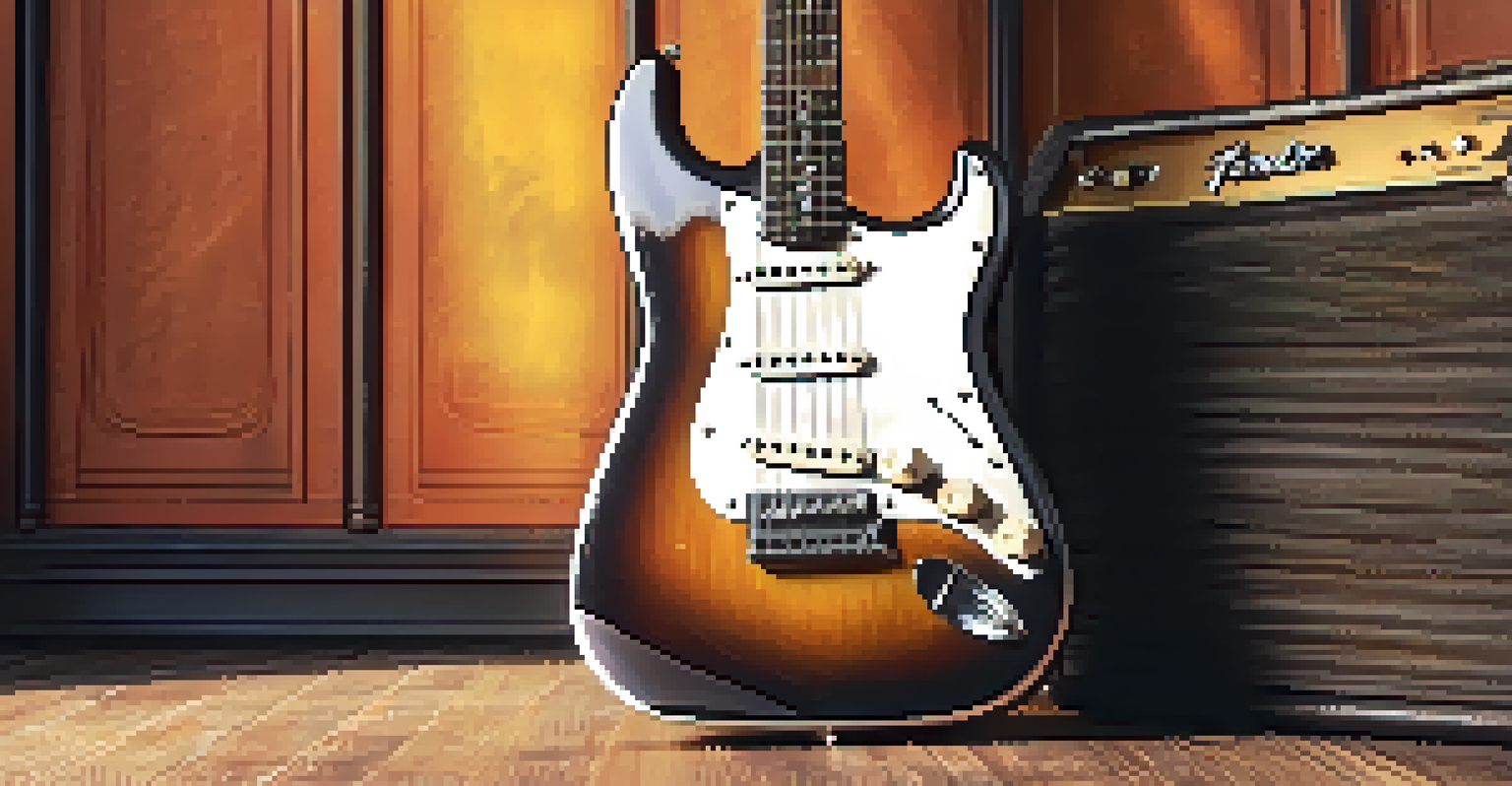Different Guitar Body Shapes and Their Construction Styles

Understanding Guitar Body Shapes: An Overview
Guitar body shapes play a vital role in both aesthetics and sound. From the classic dreadnought to the sleek Stratocaster, each shape has its own unique characteristics. These designs influence how the instrument resonates, how it feels to play, and even the style of music it’s best suited for.
The guitar is a miniature orchestra in itself.
Just like choosing a favorite book or movie, selecting the right guitar body shape is a personal choice that reflects your musical personality. Some shapes are more suited for strumming chords, while others excel at intricate fingerpicking. Understanding these differences can help you make an informed decision when choosing your next guitar.
In this article, we’ll delve into various guitar body shapes and their construction styles, helping you to appreciate the craftsmanship behind each design. Whether you’re a seasoned player or a curious beginner, this exploration will enhance your understanding of this beloved instrument.
Dreadnought: The Workhorse of Guitar Shapes
The dreadnought shape is often considered the standard in acoustic guitars, recognized for its broad body and powerful sound projection. This shape, introduced by Martin Guitars in the early 1900s, has become synonymous with folk, country, and rock music. Its larger size allows for a deep bass response, making it perfect for solo performances and songwriting.

Many players appreciate the dreadnought for its balanced tone and versatility. It responds well to both strumming and fingerstyle techniques, accommodating various genres. Whether you’re belting out a ballad or picking out a delicate melody, this shape can handle it all.
Guitar Shapes Impact Sound and Feel
The shape of a guitar significantly affects its sound quality, playability, and the style of music it best complements.
However, its size can be a double-edged sword. While it provides a robust sound, some players find it cumbersome, especially those with smaller frames. If you’re considering a dreadnought, it’s worth trying one out to see how it feels in your hands.
Concert and Grand Concert: A Comfortable Choice
The concert and grand concert shapes are slightly smaller than the dreadnought, making them a favorite among players seeking comfort without sacrificing sound quality. These guitars typically feature a narrower waist, allowing for easier access to the higher frets. This makes them excellent for fingerstyle players who need to navigate the fretboard with precision.
Music can change the world because it can change people.
With a brighter tone and more pronounced midrange, these shapes excel in solo performances and small settings. They project well but offer a more intimate sound compared to their larger counterparts. Many singer-songwriters gravitate towards these shapes for their ability to complement vocals beautifully.
As with any guitar, it’s essential to consider your playing style when choosing between concert and grand concert shapes. Each offers unique tonal qualities that can enhance your musical expression, so trying them out in person can lead to delightful discoveries.
The Classic Stratocaster: A Rock Icon
The Fender Stratocaster is perhaps one of the most iconic electric guitar shapes in music history. Known for its contoured body, the Strat provides comfort and ease of play, allowing for smooth transitions across the fretboard. This shape has been favored by countless legendary guitarists, from Jimi Hendrix to Eric Clapton, making it synonymous with rock and blues music.
One of the standout features of the Stratocaster is its three single-coil pickups, which produce a bright, clear tone. This tonal versatility makes it suitable for a wide range of genres, from surf rock to jazz. The Strat’s design not only enhances playability but also contributes to its distinctive sound.
Dreadnoughts Offer Versatility
Dreadnought guitars are celebrated for their balanced tone and adaptability, making them suitable for a wide range of playing styles.
If you’re drawn to bold sounds and expressive playing, the Stratocaster could be your best bet. Its unique shape and construction have made it a staple in many musicians' collections, captivating players with its blend of comfort and sonic possibility.
The Les Paul: A Heavyweight Champion
The Gibson Les Paul is another legendary electric guitar shape renowned for its solid body and rich, warm tones. With its single-cutaway design, the Les Paul offers a heavier feel, which many players find appealing. The weight of the guitar contributes to its sustain, giving notes a longer ring, perfect for solos and powerful riffs.
This guitar is particularly popular among rock and metal players, thanks to its humbucker pickups that deliver a thick sound without unwanted noise. The Les Paul's construction is designed for durability, making it a reliable choice for touring musicians who need an instrument that can withstand the rigors of the road.
However, its heavier weight may not be suitable for everyone. Players looking for a lightweight option might find it cumbersome. Nonetheless, the Les Paul's iconic sound and craftsmanship make it a worthy addition to any guitarist's arsenal.
Archtop Guitars: Elegance Meets Sound
Archtop guitars are characterized by their curved tops and backs, giving them a distinct aesthetic and sound profile. Often associated with jazz music, these guitars produce a warm, resonant tone that’s ideal for both strumming and intricate fingerstyle playing. Their unique design allows for a rich harmonic complexity that many players find enchanting.
The construction of archtop guitars typically involves intricate craftsmanship, often featuring a carved top and back made from high-quality woods. This meticulous attention to detail not only enhances the instrument's visual appeal but also contributes to its superior sound quality. Many luthiers take pride in creating archtops that resonate beautifully.
Personal Preference is Key
Choosing the right guitar body shape is a personal decision that should reflect your comfort, playing style, and musical preferences.
While archtops can be more expensive due to their detailed construction, they offer a standout option for musicians seeking a sophisticated instrument. If you’re exploring jazz or any genre that requires nuanced tones, an archtop could be the perfect companion for your musical journey.
The Resophonic Guitar: A Unique Voice
Resophonic guitars, often referred to as 'dobros,' are known for their distinctive sound, which is created by metal resonators rather than traditional pickups. These guitars produce a sharp, cutting tone that stands out in bluegrass and slide guitar playing. The unique construction allows for impressive volume and sustain, making them ideal for ensemble playing.
Typically made with a wooden body and metal resonators, resophonic guitars come in various shapes, including round and square necks. The choice between these shapes can affect playability; for example, round necks are easier to play with standard guitar techniques, while square necks are designed for slide playing.

If you’re intrigued by a sound that’s different from traditional acoustic or electric guitars, a resophonic guitar might be your answer. Its unique construction and tonal qualities can add a fresh flavor to your music and inspire new creative directions.
Choosing the Right Guitar Body Shape for You
When it comes to selecting the right guitar body shape, personal preference plays a significant role. Each shape not only affects the sound and playability but also influences your comfort while playing. It's essential to consider factors such as your size, playing style, and the genres of music you enjoy.
Testing different body shapes in a music store can provide valuable insights into what feels right. Don’t hesitate to ask for recommendations from staff or fellow players, as they can offer insights based on their experiences. Remember, the right guitar should feel like an extension of yourself, enhancing your musical expression.
Ultimately, the best guitar for you is one that resonates with your individual style and needs. Take your time exploring various options, and you’ll find an instrument that not only sounds incredible but also inspires your creativity.